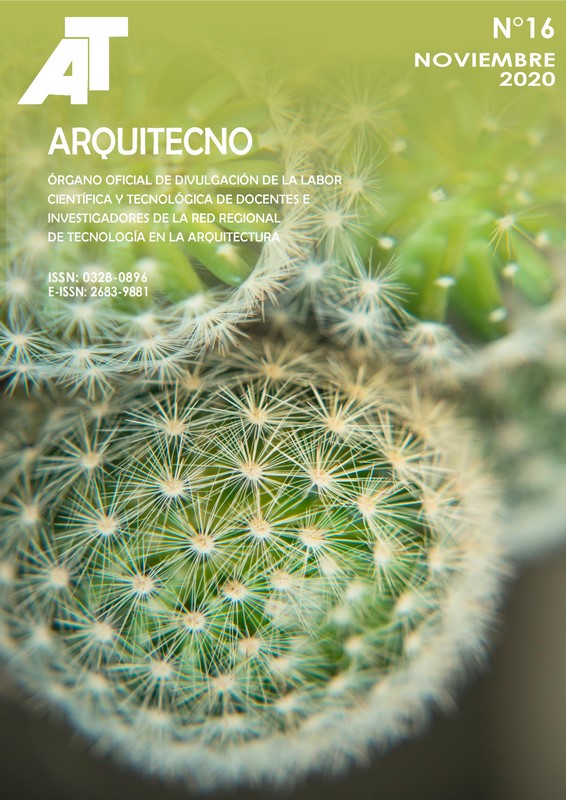Generative processes for bioinspired morphology in the wood tissue of cactus
DOI:
https://doi.org/10.30972/arq.0164549Keywords:
archetype, biomimicry, Cinema 4D, deformation, topologyAbstract
The simulation procedure of the equilibrium dynamics of a bio-inspired system in the wooden structure of cacti is described. The design studies the functional morphology of the organic referent through the construction of models. Simulation strategies use the search for repetitive patterns to explore generative processes and simulate complex phenomena. The simulation procedures performed to define the transformation laws that allow generating the shape are described. The models share the archetype of a rectangle extruded according to a differential guideline. The resulting geometric object is the base unit of the representation and characterizes the topology properties of the model. The successive actions deal with: iteration as an aggregative repetition process that allows the system to grow, and the application of deforming objects as factors of variation of the shape that represents the adaptability of the tissue. The morphological results vary according to the actions that generate the shape and the associated processes, while maintaining the topology properties. The design is understood as a genetic map where the primitive data are connected with each other, increasing the hierarchy level of the system.Downloads
Published
2020-11-24
How to Cite
Rossi, L. (2020). Generative processes for bioinspired morphology in the wood tissue of cactus. Arquitecno, (16), 15–25. https://doi.org/10.30972/arq.0164549
Issue
Section
Investigación
License
Los autores ceden a Arquitecno los derechos de publicación de sus trabajos, toda vez que hayan sido admitidos como parte de alguno de sus números. Ellos, no obstante, retienen los derechos de propiedad intelectual y responsabilidad ética así como la posibilidad de dar difusión propia por los medios que consideren.





52.jpg)
